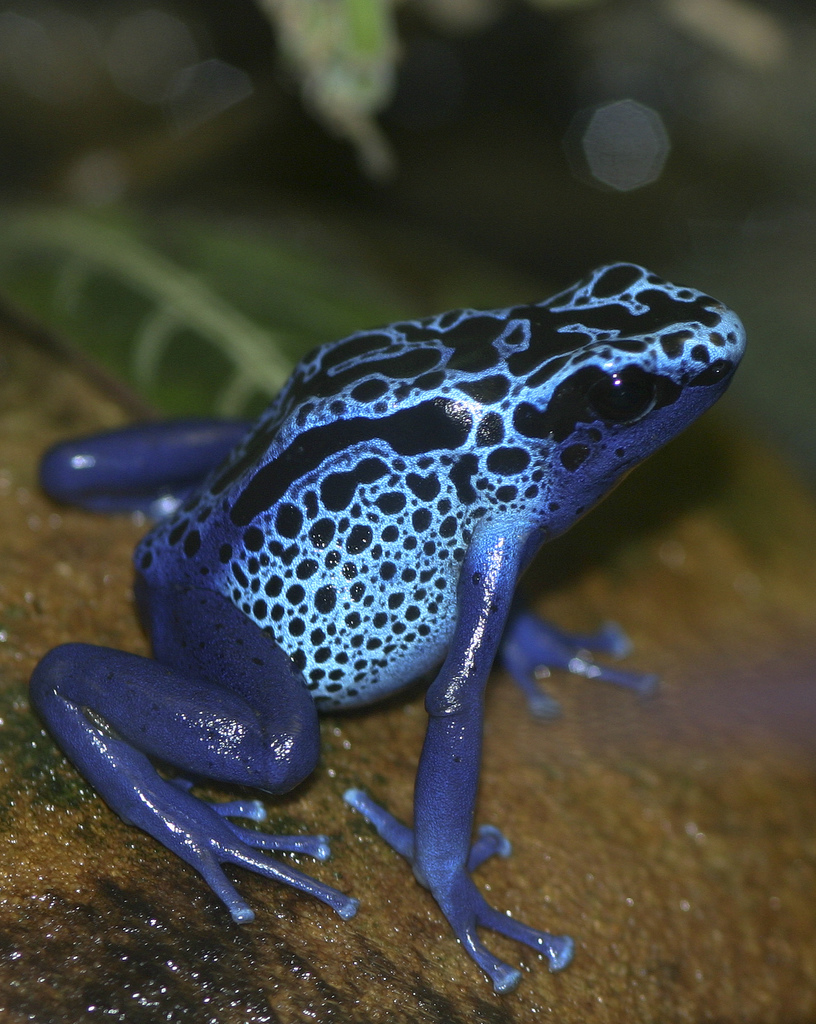

Phyllobates terribilis is the most poisonous. The poison from only three kinds of poison dart frog is a threat to humans: Phyllobates terribilis, Phyllobates aurotaenia and Phyllobates bicolor.
#BLUE POISON DART FROG SKIN#
Some of them only secrete skin poisons that taste terrible or make you sick or throw up if you eat the frog. Not all poison dart frogs have strong poisons. The poison from one frog could kill 100 adult humans! Each frog contains nearly 200 micrograms. The poison that some species secrete is the most powerful animal poison known.Īs little as 2 micrograms of the poison can kill an adult human. The poison dulls the nerves and can produce heart and respiratory failure. They use these darts to kill howler monkeys and other small animals. They wipe the darts on the back of a poison dart frog after heating the frog over a campfire.

The Choco Indians from Columbia poison the tips of their darts with poison dart frog poison. Here, at the Jungle Zoo we feed our Blue Poison Dart frogs fruit flies, meal worms and crickets so, as they ingest no toxins with their food, they have lost their toxicity and are perfectly harmless.īlue Poison Dart frogs are diurnal, that is, active by day.Ĥ – 6 years in the wild, up to 12 years in captivity. The poisons ingested from their food, especially the ants and some caterpillars, are stored in the skin making them poisonous themselves. Spiders and other small arthropods are also eaten. This sticky skin is also where this frog carries it’s tadpoles on it’s back.īlue Poison Dart frogs are carnivorous and in the wild will eat insects, including caterpillars, ants, termites, beetles, flies and mites. The bright blue colour serves as a warning to potential predators that it is not good to eat! The skin is also very sticky which holds in moisture as these frogs live most of their lives out of water on the forest floor. The skin of Blue Poison Dart frogs is adapted to store toxins that can paralyse or kill potential predators. The Blue Poison Dart Frog is just one of over 200 species of poison dart frog, a quarter of which are classified as threatened or critically endangered. Threats include habitat destruction, illegal collection for the pet trade, pollution and a fungal disease called chytridiomycosis, which to date, has caused the extinction and decline of over 200 species of frog. Has a distinctive ‘hunchback’ appearance. Like human fingerprints, the skin pattern is unique to each frog. Bright blue, lighter on top and darker belly and legs with black patches. Quite a small frog between about 2.5 and 3.5 cms.

The Blue Poison Dart Frog is found in tropical rain forests surrounded by the Sipaliwini savanna, which is located in southern Suriname and adjacent far northern Brazil in South America.īlue Poison Dart Frog or Blue Poison Arrow Frog is also known by local native Tirio Indian name, Okopipi.


 0 kommentar(er)
0 kommentar(er)
